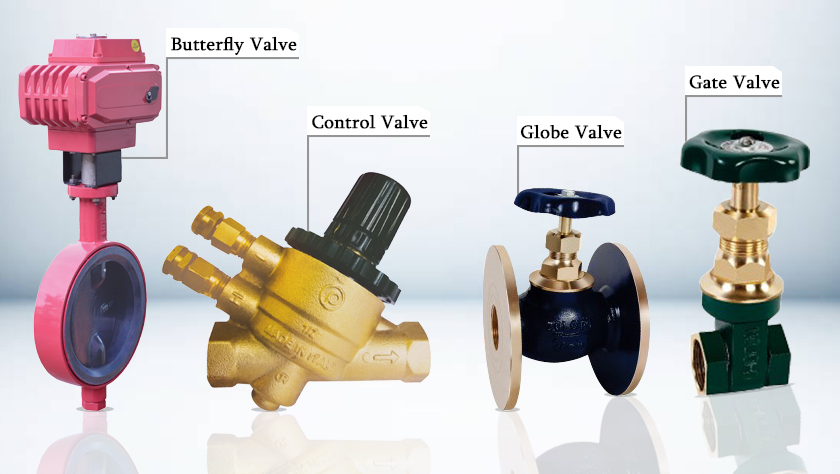Effective Control Valves: Secret Parts for Effective System Administration
Effective Control Valves: Secret Parts for Effective System Administration
Blog Article

Maximize Power Savings and Comfort With Advanced Building Automation Controls
In the world of modern design and center administration, the assimilation of innovative structure automation regulates stands as a critical development. The merging of innovation and sustainability has birthed a brand-new period where power performance, convenience optimization, and operational streamlining are no more obtainable realities but remote ambitions. By using the power of automation, buildings can adjust, react, and develop in methods that were as soon as unbelievable. The potential for significant energy savings and enhanced convenience is not just an opportunity however a guarantee waiting to be met. This paradigm change in structure administration holds the essential to unlocking a globe where environmental conscientiousness and occupant well-being harmoniously exist side-by-side within the wall surfaces of our structures.
Energy Effectiveness Advantages
Energy performance benefits can substantially reduce energy intake and functional costs in structures. Energy-efficient systems, such as innovative structure automation controls, can enhance the usage of sources like lighting, air conditioning, and heating, leading to reduced power costs over time.
In addition, enhanced energy effectiveness can lengthen the life-span of structure equipment and systems. By operating a lot more efficiently, heating and cooling systems, lighting fixtures, and various other building components experience less deterioration, leading to reduced maintenance and substitute costs. Additionally, energy-efficient structures often command higher home values and rental prices, providing long-lasting economic advantages to owners.
Moreover, power efficiency can boost resident comfort and performance. Correctly managed indoor atmospheres with optimum lighting and thermal conditions create a more helpful and positive office, leading to improved staff member contentment and efficiency. On the whole, the energy effectiveness advantages connected with sophisticated building automation controls are multifaceted, including expense savings, environmental stewardship, and owner health.
Enhanced Comfort Control
Enhancing convenience control in building settings calls for a sophisticated assimilation of sophisticated automation systems for optimal occupant well-being. By making use of innovative structure automation controls, facilities can tailor the indoor atmosphere to meet the specific needs and choices of residents. control valves.
By integrating these advanced controls, buildings can not just boost comfort but likewise improve power effectiveness by optimizing system operations based on actual tenancy and use patterns. Eventually, focusing on resident comfort via innovative automation systems leads to a more delightful and much healthier indoor atmosphere.
Operational Effectiveness Improvements

Additionally, the application of real-time tracking and analytics tools allows building operators to recognize energy inadequacies and functional abnormalities promptly. By continuously checking energy usage patterns and system performance metrics, adjustments can be made in real-time to enhance energy usage and ensure peak functional effectiveness. control valves. Additionally, integrating need response techniques right into structure automation controls can even more enhance operational effectiveness by dynamically readjusting energy use based upon grid problems and rates signals
Indoor Environment Optimization
Reliable interior environment optimization is an essential element of structure automation controls, making certain residents' comfort and well-being while making best use of energy financial savings. By using innovative sensing units and controls, building automation systems can constantly monitor and change temperature level, humidity degrees, air quality, and air flow to create an optimum interior environment. Keeping regular and comfortable problems not only enhances resident complete satisfaction but likewise improves efficiency and total wellness.
Indoor climate optimization also plays an important duty in power effectiveness. By fine-tuning heating, air flow, and cooling systems based on real-time information and occupancy patterns, constructing automation controls can substantially reduce power intake - control valves. Carrying out methods such as demand-controlled air flow and thermal zoning can aid lessen energy waste while guaranteeing that each location of the structure gets the needed conditioning.

Sustainable Setting Creation
Building automation controls not only enhance indoor climate conditions for power effectiveness and occupant comfort but also lay the foundation for producing a lasting setting via strategic administration of systems and resources. By integrating sophisticated building automation technologies, such as sensing units, actuators, and smart software program, facilities can change and check energy use in real-time to decrease waste and minimize their carbon footprint. These systems make it possible for anticipating upkeep, recognizing possible problems before they escalate and enhancing equipment performance to enhance long life and effectiveness.
Furthermore, sustainable setting creation prolongs beyond power administration to include water preservation, waste decrease, and indoor air top quality renovation. Structure automation controls can control water use, spot leakages, and ensure correct waste disposal techniques, adding to overall sustainability efforts. In addition, by checking and controlling ventilation and purification systems, these technologies enhance owner health and wellness and efficiency while decreasing power consumption linked his explanation with cooling and heating procedures.
Verdict
To conclude, progressed structure automation manages deal significant benefits in regards to energy cost savings, convenience control, functional efficiency, indoor environment optimization, and producing a lasting environment. By executing these controls, buildings can accomplish optimal performance while minimizing energy consumption and improving passenger convenience. It is obvious that making use of innovative automation modern technology is critical in improving structure efficiency and producing a much more lasting future.
Power performance benefits can dramatically minimize energy usage and operational prices in structures. In general, the energy effectiveness advantages linked with innovative building automation controls are diverse, including expense savings, ecological stewardship, and owner well-being.
In addition, integrating demand feedback strategies right into structure automation controls can further enhance operational effectiveness by dynamically readjusting power usage based on grid conditions and pricing you could try this out signals.
Structure automation regulates not just enhance indoor climate conditions for power performance and occupant convenience yet also lay the structure for creating a lasting setting through strategic administration of sources and systems.In verdict, advanced building automation manages deal significant advantages in terms of energy cost savings, convenience control, functional effectiveness, interior environment optimization, and developing a lasting atmosphere.
Report this page